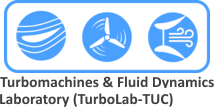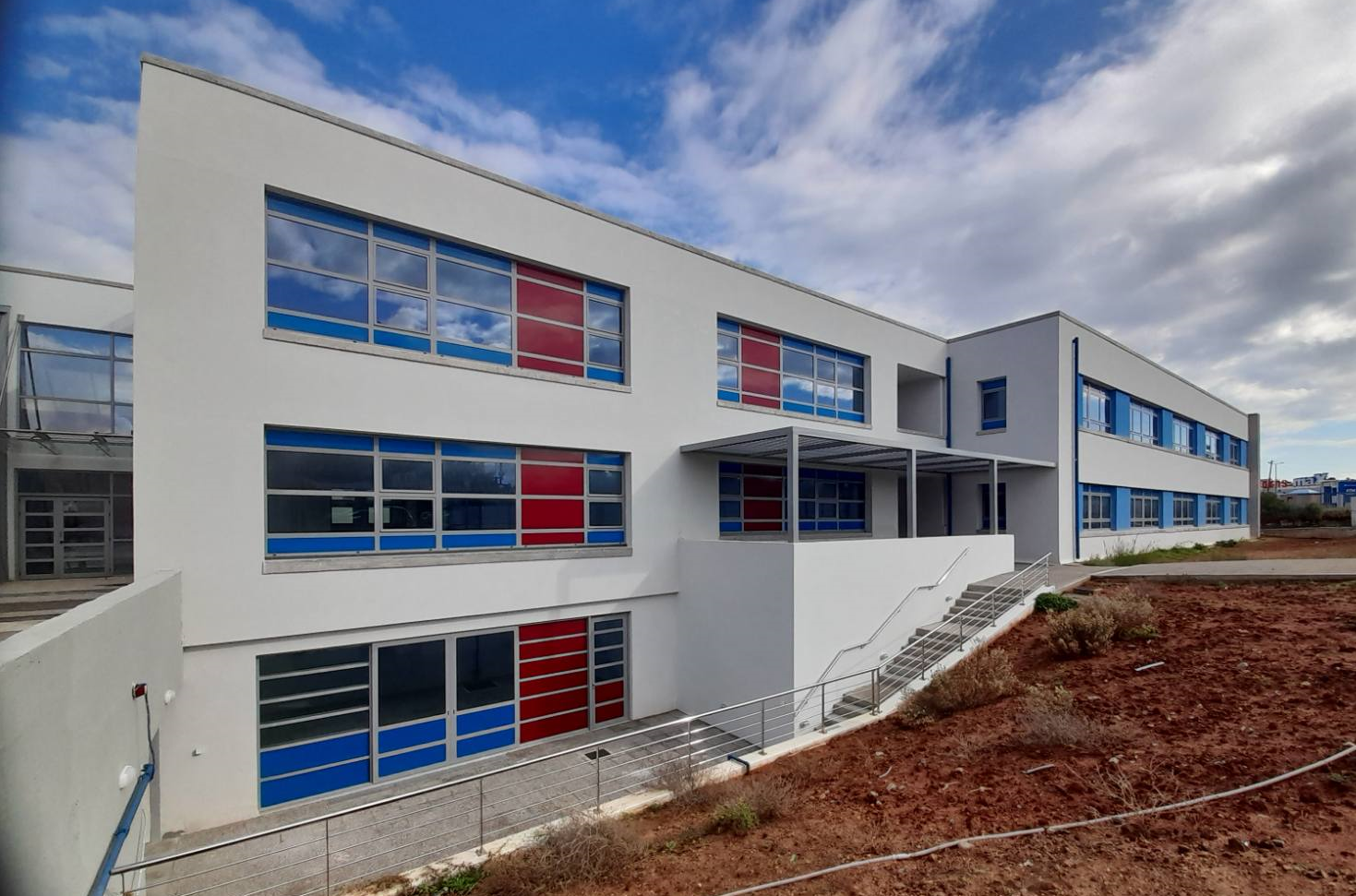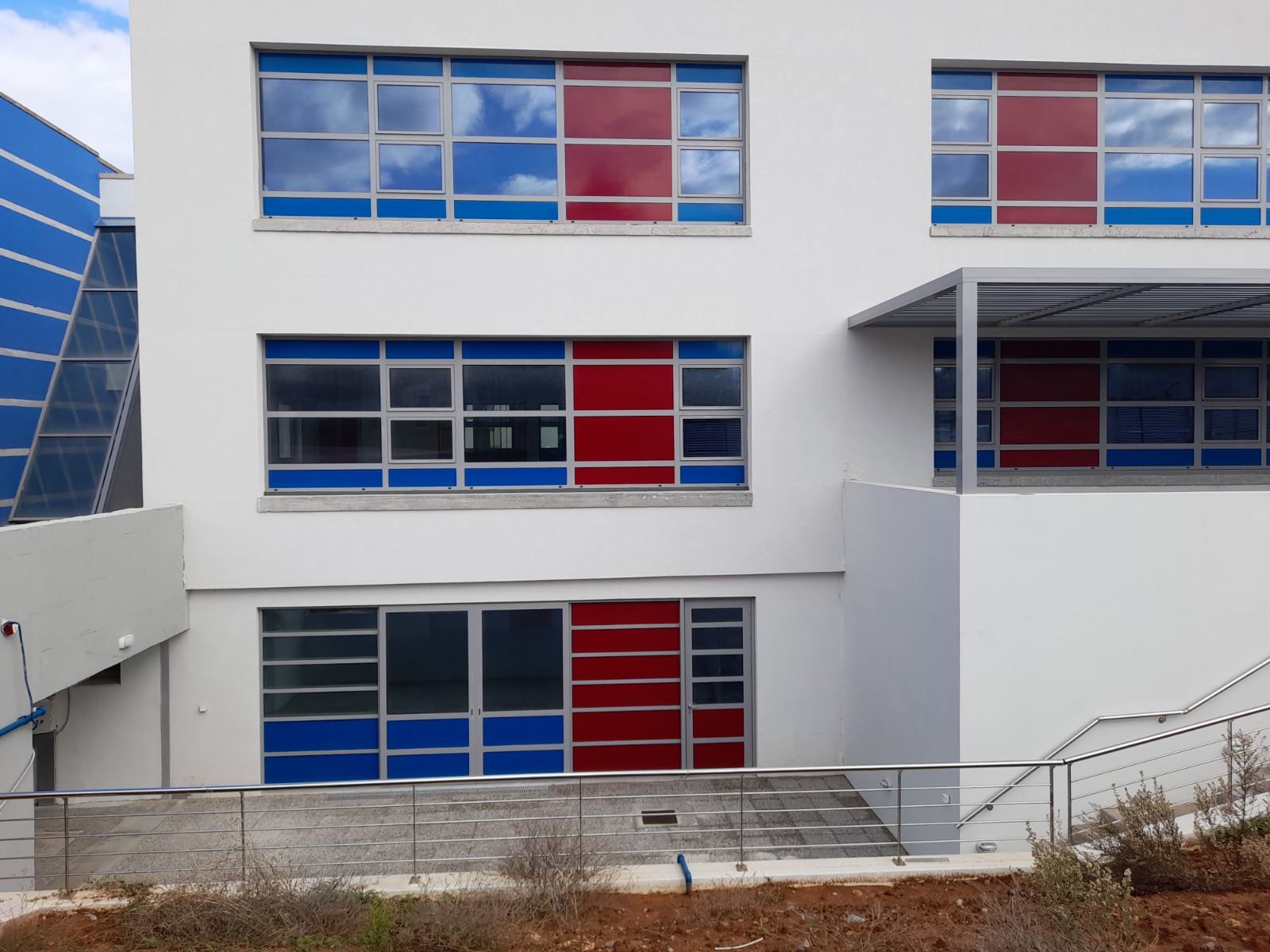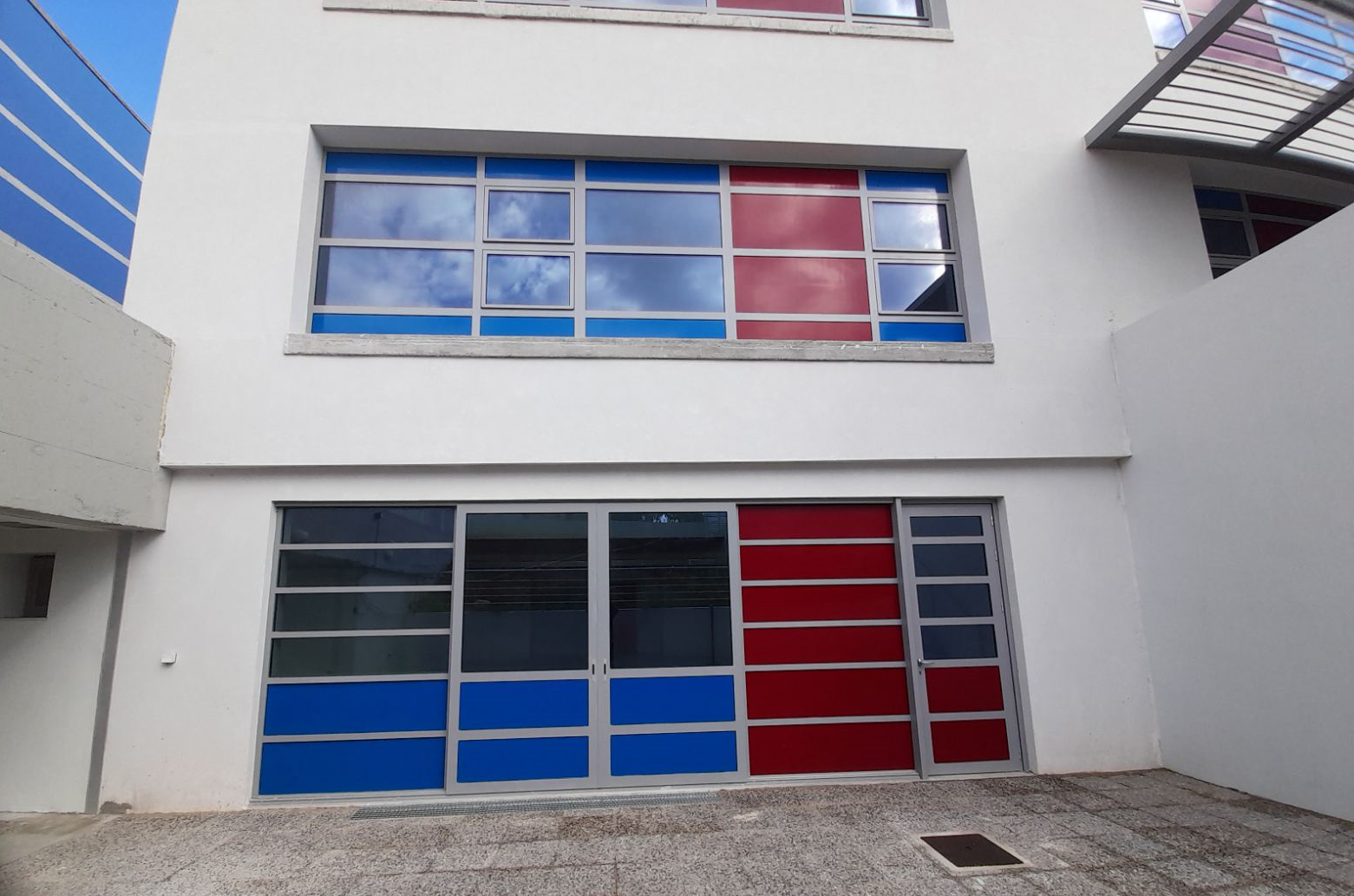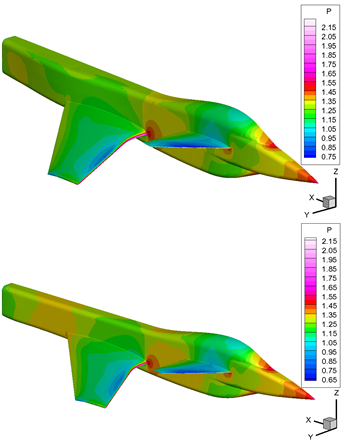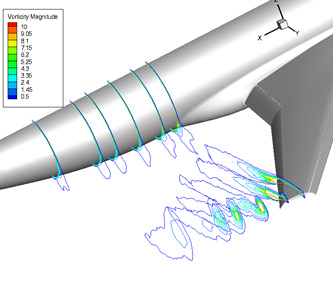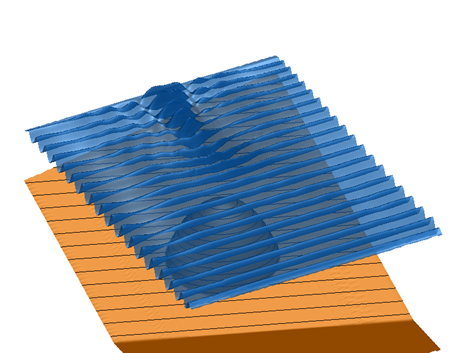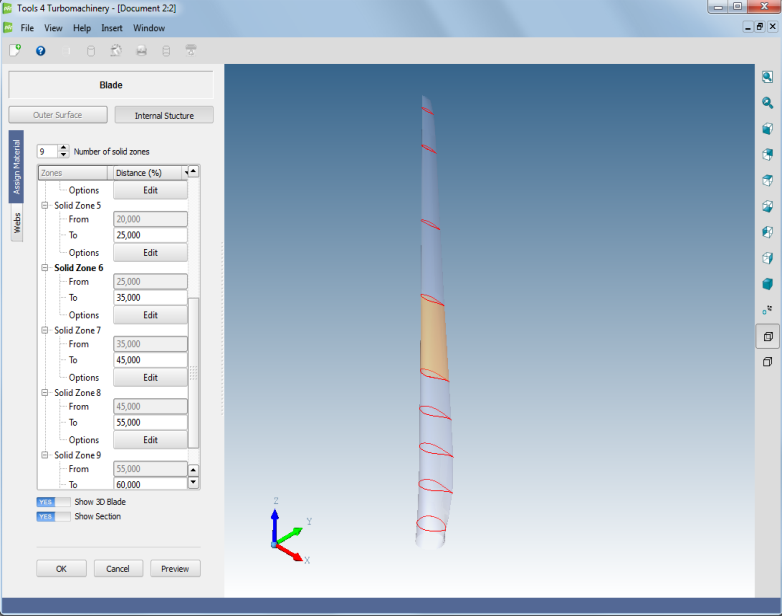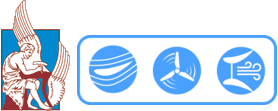
Turbomachines & Fluid Dynamics Laboratory, School of Production Engineering & Management, Technical University of Crete was established in July 22, 2019 (Decision No. 6033, Government Gazette of the Hellenic Republic, Volume 2, 2993, July 22, 2019). With the same Decision the "Internal Rules of Operation" of the Laboratory, were also defined.
However, before the official establishment of the Turbomachines & Fluid Dynamics Laboratory, there was a long activity (since 1999) of the corresponding research team, which evolved to the current Laboratory.
The Turbomachines & Fluid Dynamics Laboratory serves educational and research needs in the scientific fields: "Technical Thermodynamics", "Fluid Dynamics", "Heat Transfer", "Thermal Turbomachines", "Hydrodynamic Turbomachines", "Wind Turbines", "Computational Fluid Dynamics & Heat Transfer", "Aerodynamics & Gas Dynamics", and "Optimal Design of Turbomachinery Components".
The aim of the Laboratory is to expand the knowledge and experience of students, so that they can proceed to effective use of the knowledge offered in the above scientific fields during their professional career, or their appropriate orientation in respective postgraduate directions. An important part of the educational and research activity of the Laboratory focuses on modern scientific fields, such as Computational Fluid Dynamics (CFD), and Optimal Design of Turbomachinery Components.
Latest News
Mission & Purpose of the Laboratory
The work of the Turbomachines and Fluid Dynamics Laboratory is research, educational and social. Its aim is to support trainees (a) to have a deep understanding of the scientific objects treated by the Laboratory, (b) to gain practical experience in the operation of turbomachines, as well as mass and heat transfer devices, (c) to participate in the research activity of the Laboratory and to develop new knowledge in its scientific fields, and (d) to contribute to the development of computational methods for the simulation of natural phenomena, in the scientific fields of the Laboratory.
Specifically, the mission of the Laboratory is:
- The coverage at undergraduate and postgraduate level of the research and teaching needs of the School of Production Engineering & Management, as well as other Faculties of the Technical University of Crete, in matters that fall within the objects of activity of the Laboratory.
- The production and application of fundamental and applied research, related to the development and use of advanced computational methods and the corresponding software (a) for the simulation of natural phenomena in the scientific fields of the Laboratory, (b) for the optimal design of Turbomachinery components, (c) for the optimal design of devices, processes and systems, related to mass and heat transfer, (d) for the study of standard examples of applications.
- The support of postdoctoral research in the objects of activity of the Laboratory.
- The collaboration with research centers and academic institutions at home and abroad, with the same and related objectives, provided that the scientific objectives coincide and complement each other.
- The organization of scientific lectures, workshops, seminars, symposia, conferences and other scientific events and the invitation to them of Greek and foreign recognized scientists, as well as the realization of scientific publications.
- The implementation of research and development projects in all relevant scientific fields, independently or in collaboration with other Laboratories, faculty members, or Schools of the Technical University of Crete or other educational, scientific or research institutions, as well as public and private bodies and domestic and foreign organizations.
- The provision of services according to the current legislation.
- The connection of the Laboratory with productive sectors and bodies of society and economy, in order to promote its broader scientific goals and reciprocity in society.
Laboratory Facilities
The Turbomachines & Fluid Dynamics Laboratory has facilities inside the University Campus of the Technical University of Crete, in Chania, Crete, Greece. The Technical University of Crete is built in a panoramic location in Akrotiri, 7 km northeast of the city of Chania and covers an area of 2,900 acres. The main space of the Laboratory is located in the newly built building of the School of Production Engineering & Management (Building Γ3). It consists of a semi-basement open space, with additional ancillary spaces on the same level (approximately 117 square meters), as well as an elevated space (loft), which occupies part of the area of the underlying space (approximately 35 square meters). Additional office space is available for Laboratory members at Building Δ4 of the School of Production Engineering & Management.
Support of the Formula Students TUC (FS-TUC) Team
The Turbomachines & Fluid Dynamics Laboratory (TurboLab-TUC) of the Technical University of Crete supports and houses the racing team Formula Students TUC (FS-TUC) from the beginning of its establishment. The FS-TUC team aims to develop and build a racing car, to participate in the Formula Student races, organized by the Institution of Mechanical Engineers (United Kingdom), as well as other similar events.
Equipment
The Turbomachines & Fluid Dynamics Laboratory (TurboLab-TUC) has equipment consisting of: (a) Computer Systems, (b) Commercial & Open Source Software, (c) In-house Software, (d) Measuring Devices, and (e) Hand Tools & Machine Tools.
a) Computing Systems
- Two(2) Servers DELL PowerEdge R815, with 64 cores and 256GB RAM each.
- One (1) Server DELL PowerEdge R415, with 6 cores and 64GB RAM.
- Three (3) Servers DELL PowerEdge 2950, with 8 cores and up to 64GB RAM each.
- Three (3) Workstations DELL Precision T7500, with 12 cores and 48GB RAM each.
- Five (5) Workstations, with 8 cores and 32GB RAM each.
- One (1) Workstation, with 10 cores and 64GB RAM.
- One (1) Workstation, with 6 cores and 64GB RAM.
b) Commercial & Open-Source Software
- ANSYS CFX & Fluent (CFD software).
- CATIA V5 (CAD&CAE software).
- SolidWorks (CAD&CAE software).
- Qt C++.
- Intel Fortran.
- Academic Software Direct Simulation Monte Carlo (DSMC) SPARTA (SANDIA Labs.).
c) In-house Scientific Software
This software has been developed by members of the Turbomachines & Fluid Dynamics Laboratory, within Research Projects, Diploma Theses, and/or M.Sc. & Ph.D. Theses. It covers several aspects of Computational Engineering and Scientific Computing, i.e. mesh generation, Computational Fluid Dynamics (CFD), Computational Heat Transfer, Fluid-Structure Interaction (FSI), Parametric Design, and Design Optimization.
- Galatea: a parallelized Computational Fluid Dynamics (CFD) software, based on the 3D steady compressible Reynolds-Averaged Navier-Stokes (RANS) equations. It uses a node-centered Finite Volume (FV) methodology for the discretization of the PDEs in hybrid unstructured grids. Built-in agglomerated multigrid method; parallel processing using domain decomposition and MPI protocol; and h-refinement of the grid (Fortran).
- Galatea-Rad: is a discrete module of the Galatea CFD solver, written in Fortran. It solves the time-dependent RTE (Radiative Transfer Equation) to predict radiative heat transfer in general enclosures through absorbing, emitting, and either isotropically or anisotropically scattering gray media, for steady-state and transient problems (Fortran).
- Galatea-Ι: a parallelized Computational Fluid Dynamics (CFD) software, based on the 3D (steady/unsteady) incompressible Reynolds-Averaged Navier-Stokes (RANS) equations, utilizing the artificial compressibility concept. It uses a node-centered Finite Volume (FV) methodology for the discretization of the PDEs in hybrid unstructured grids. Built-in agglomerated multigrid method; parallel processing using domain decomposition and MPI protocol; and h-refinement of the grid (Fortran).
- Gal2D: a Computational Fluid Dynamics (CFD) software, based on the 2D (& 2D axisymmetric) compressible RANS equations, utilizing the node-centered Finite-Volume (FV) methodology for the discretization of the PDEs in hybrid unstructured grids. Built-in h-refinement capability (Fortran).
- IGal2D: a Computational Fluid Dynamics (CFD) software, based on the 2D (& 2D axisymmetric) incompressible RANS equations (artificial compressibility concept), utilizing the node-centered Finite-Volume (FV) methodology for the discretization of the PDEs in hybrid unstructured grids (Fortran).
- TUCWave: a novel Fortran planform that advances a step ahead the methodology of the solution of dispersive wave models. TUCWave uses a high-order well-balanced unstructured finite volume (FV) scheme on triangular meshes for modeling weakly nonlinear and weakly dispersive water waves over varying bathymetries, as described by the 2D depth-integrated extended Boussinesq equations of Nwogu (1993), rewritten in conservation law form.
- T4T (Tools for Turbomachinery): a software tool developed for the parametric design of turbomachinery and wind turbine blades. The complete design procedure is object-oriented and parametric, providing the ability to the user to define various types of blades. It has been developed in QT C++, utilizing OpenCascade graphical and computational libraries.
- ASPIDES (Asynchronous/Synchronous Parallel Intelligent Differential Evolution Software): a design optimization software, which incorporates a parallel (synchronous or asynchronous) metamodel-assisted Differential Evolution (DE) algorithm. It uses a unique population that is distributed among the processors/cores, with a Master-Slave architecture, while the required data exchange and communication between the processors is achieved using MPI (Message Passing Interface). The utilization of two Artificial Neural Networks (ANNs) as surrogate models within the ASPIDES enhances its performance by substituting the computationally time-consuming exact evaluations of the fitness function with low-cost approximations (Fortran).
- FSImulator: a Fluid-Structure Interaction platform aiming to facilitate interaction between a CSD (Computational Structural Dynamics) solver and a CFD (Computational Fluid Dynamics) solver. Attention is mainly directed towards the efficient and accurate transfer of predicted displacements, velocities (by CSD) and loads (by CFD) (Qt C++ and OpenCascade).
- BEM-TUC: a software tool for the evaluation of wind-turbine rotors and propellers, based on the Blade Element Momentum methodology (C++).
- T2GR: a software tool developed for the interactive construction of 2D hybrid unstructured grids (C++).
- DAEDALUS: a software tool developed for the parametric design of airfoils and the automated flow-filed simulation around them (C++).
d) Measuring Devices
- Particle Image Velocimetry (PIV) system, provided by TSI for the measurement of 3D velocity vectors.
- Various hand-held measuring devices: Fluke 54-2 B 50HZ dual input digital thermometer; Fluke 179 True RMS multimeter; Flir TG56 30:1 spot IR thermometer; Flir EM54 environmental meter; Flir MR160 moisture meter; Extech EN510 environmental meter; SAUTER SU-130 Lp-A sound level meter; SAUTER SP 200K compact photometer; SAUTER FH-5K universal digital force gauge; BOSCH GLM 250 VF, laser distance measuring device.
- Various measuring devices by Mitutoyo: Calipers 500-717-20, 530-122, 530-123; Micrometers 293-821-30, 103-913-50; Dial Test Indicators 513-404-10E, 2310SB-10; Magnetic Stand 7033B; Height Gauge 570-302; Granite Surface Plate 901-132.
